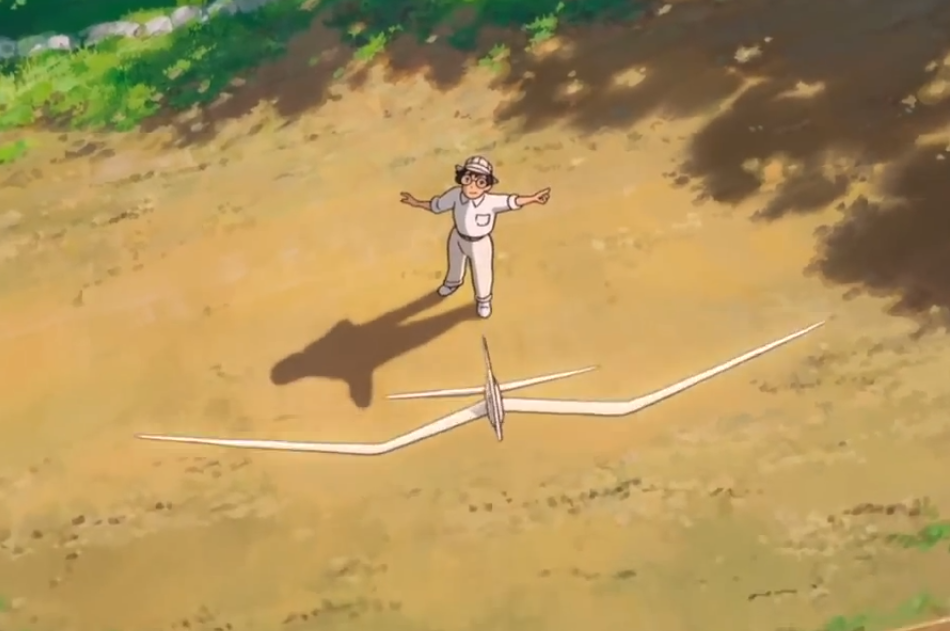Not many are familiar with Jiro Horikoshi, but odds are you’ve at least heard of some of his creations — he designed the Zero planes used in the attack on Pearl Harbor. He is also the unlikely subject of a new animated biopic, The Wind Rises, which chronicles his life from his early childhood to the lift-off of the infamous warplanes.

Some of it is fictional, although it hardly matters. The film shows the man consumed with passion for his work. When his employers learn that he has a fiancée, they burst out laughing — they had assumed he would marry an aircraft.
But working is not all he does. We see him travelling to various regions of Japan as well as pre-WW2 Germany. We see him in love with a young girl he saves during the Great Kanto Earthquake of 1923 and later meets as a grown woman. But above all, we see him dreaming. The movie opens and closes with him in a world of his own, where behemoth airplanes fill the skies and where he can interact with real-life aircraft designer Giovanni Caproni, a mentor he never had a chance to know.
The film is intrinsically poetic — the title itself comes from a Paul Valéry poem, which goes: “The wind is rising, we must try to live.” The line becomes a leitmotiv, repeated several times in the course of the story, in different languages, by different people.
The images are just as wondrous: the colours vivid, the planes highly detailed and the dream sequences full of fantasy and life. There are scenes of great intensity, disasters both natural and man-caused.
It is, however, in the quieter moments that the film truly soars. A scene in which the protagonist sends paper planes to his beloved is among the most memorable.
Not all animation is meant for children, and The Wind Rises has been the subject of a controversy. How ethical is it to celebrate a man whose work has caused death and ruin? This issue is addressed in one of Horikoshi’s imaginary conversations with Caproni. The Italian engineer believes that aircrafts hold no moral value — he calls them “beautiful cursed dreams, waiting to be swallowed up by the sky.” This is an interesting insight, and it holds a sad truth. Horikoshi’s talent is both a blessing and a curse. His tragedy lies in accepting that his art might be used as a tool of war.
We owe this little marvel of animation to a man who needs no introduction. Hayao Miyazaki has earned himself a place in the history of film with such masterpieces as Spirited Away, Nausicaa of the Valley of the Wind and Castle in the Sky. If you’ve paid attention, you’ve noticed all of his movies deal with flying. While this film is more realistic and straightforward than most, it is nonetheless magical to see Horikoshi’s creations take off. He seems to make them out of thin air, using only his audacity and power of imagination. Much like Miyazaki himself.
This is said to be the master animator’s last film. It’s not the first time he has vowed to quit, but the first time he’s been taken seriously. Thus, The Wind Rises is an unmissable experience, bound to leave you heavy-hearted but admirative. Rumors are circulating that he might be changing his mind again. Perhaps he has one more dream to share. Perhaps he can still feel the wind rising.
The Wind Rises is currently in theatres nationwide.





